"Your Guide to Saving Energy at Home" is an energy-saving checklist. Download the PDF in English, Hmong, Russian, Somali, or Spanish.
Need a guide for your organization to share with its logo? We have customizable guides too!
Whether you're looking to cut back on your energy bills or curious about what upgrades your should make to your appliances, this is the place to start. We compiled these do-it-yourself tips and resources — organized by topic in the side menu — so you can easily get to the information most useful to where you are on your clean energy journey.
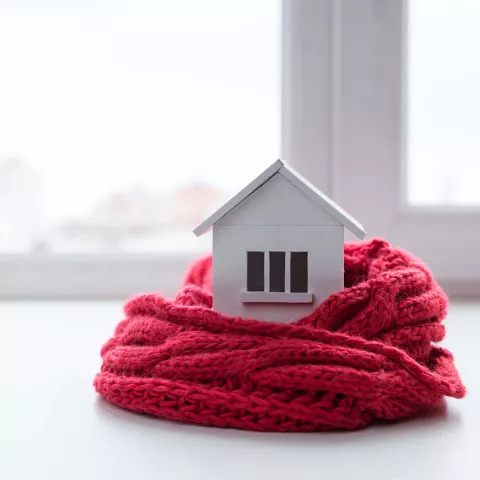 BE EFFICIENTLY COMFORTABLE
BE EFFICIENTLY COMFORTABLEDon’t heat or cool the outdoors:
If you have air registers, make sure they are clear of furniture or other obstructions so that air can circulate.
A smart thermostat can be programmed to cool or heat spaces in advance rather than maintaining a constant temperature.
A free programmable thermostat is often included for free when you have a home energy audit. Or you can check with your local utility to see if they offer rebates or free thermostats.
Get your heating system tuned up annually and replace furnace filters monthly.
If your furnace stops working and you can't afford repairs, contact the Energy Assistance Program (EAP), usually your local Community Action Agency.
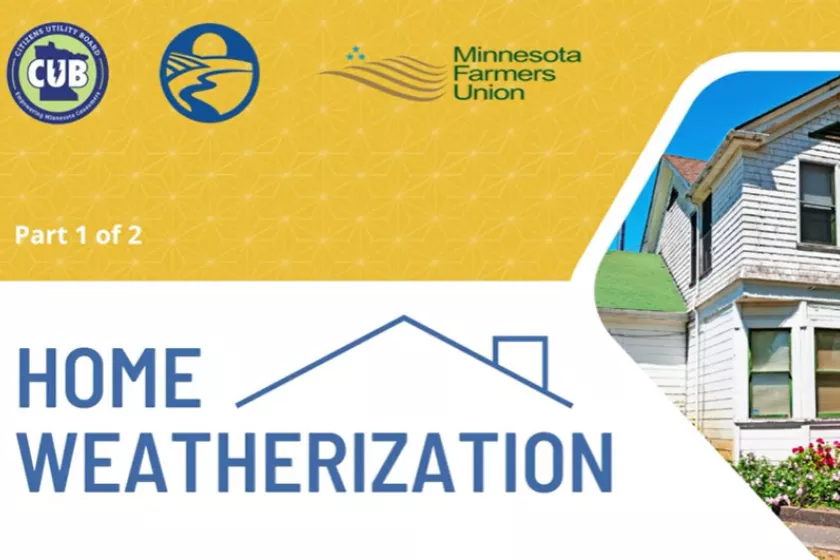
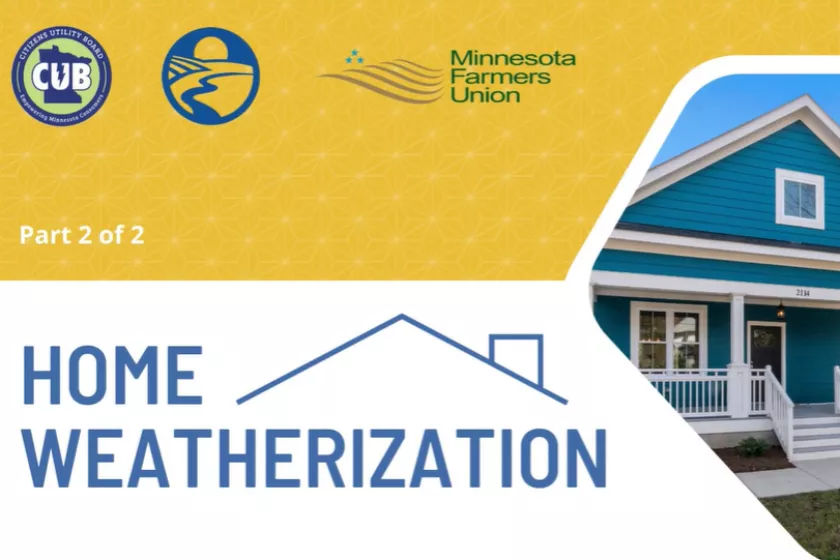
Learn more about weatherization upgrades and programs that can pay for them.
Information specifically for renters, residents of manufactured homes, single-family home buyers, and landlords provide ways to be comfortable, safe, and efficient.
Assume that the home is being sold “as is.” Get it inspected by a professional who is a member of ASHI or InterNACHI. It can be a good idea to request previous utility bills to estimate heating and cooling costs in the home, as high bills could indicate that energy improvements need to be made.
Before buying a home, there are four areas you should inspect, with the highest opportunity for energy savings in Minnesota’s climate:
Ask to see recent utility bills so you know how much they might cost.
What utilities does the house or apartment have?
If there is more than one unit in the building, are there individual energy meters for each unit or is there one shared meter? Electric, natural gas, delivered fuels (propane or fuel oil), other?
Who pays the utilities: renter or landlord?
Talk with your landlord about energy:
Contact your landlord.
MN law requires that landlords maintain rental properties so that they are “fit to live in” and “kept in reasonable repair.”
If your landlord pays your utilities:
Contact your landlord to alert them that utilities need to be paid. LawHelpMN.org offers additional suggestions.
If you pay your own utilities:
Minnesota’s Cold Weather Rule (CWR) is a state law that protects you from having your electric or natural gas service shut off between October 1 and April 30. If you are behind in paying your electric or natural gas bill, contact your utility company to find out if you qualify for CWR protection, and to sign up.
This FREE online class provides information on the rental process and related skills
Under "Housing & Utilities" and "Spanish"
This useful document from the MN Attorney General provides details on legal rights and responsibilities relating to housing rentals.
This nonprofit Minnesota tenant advocacy organization provides free and low-cost legal, organizing, education, and advocacy services so that tenants throughout Minnesota can solve their own rental housing problems.
MN Housing is the state’s housing finance agency. If you need help finding or paying for rental housing, check out the resources on their website.
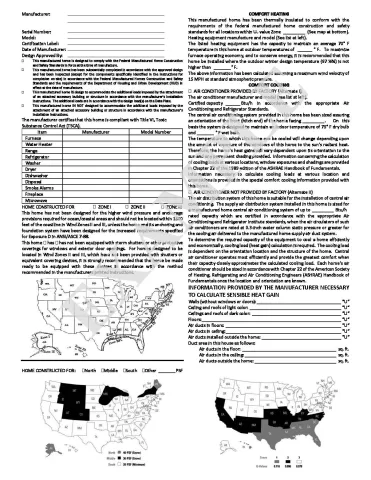 The Data Plate is a sheet of paper located in a kitchen cabinet, an electrical panel, or a bedroom closet. It should never be removed! If it is missing, you may not be able to find out whether the home was designed for Minnesota’s cold climate. A missing data plate may also mean that the home was manufactured prior to 1976, when efficiency standards were implemented for manufactured homes. There are several pieces of information on the data plate that are particularly important:
The Data Plate is a sheet of paper located in a kitchen cabinet, an electrical panel, or a bedroom closet. It should never be removed! If it is missing, you may not be able to find out whether the home was designed for Minnesota’s cold climate. A missing data plate may also mean that the home was manufactured prior to 1976, when efficiency standards were implemented for manufactured homes. There are several pieces of information on the data plate that are particularly important:
Assume that the manufactured home is being sold “as is.” Get it inspected by a professional who is a member of ASHI or InterNACHI. A few things to look for:
Under "Housing & Utilities," and also under "Spanish"
This publication from the Minnesota Attorney General gives an overview of rights and responsibilities for residents of manufactured homes and owners of manufactured home parks.

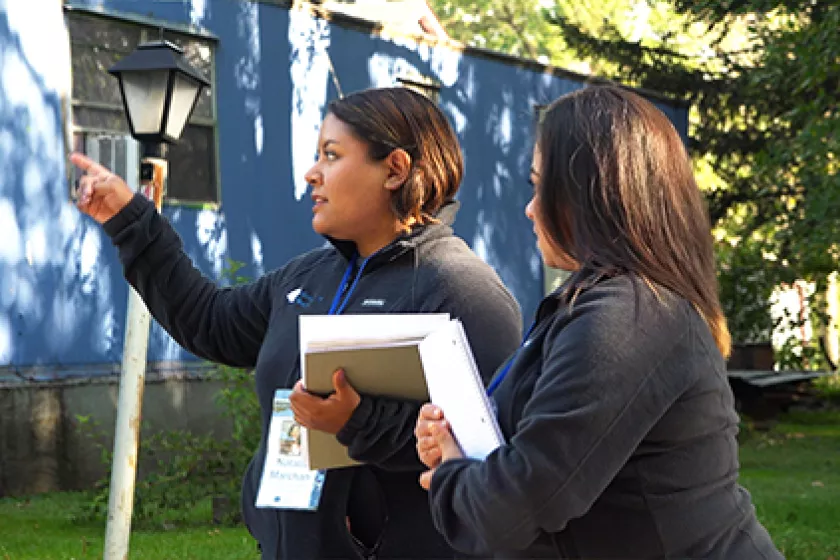
Use a power strip to turn off multiple electronics at once, or use a smart plug to schedule when devices turn on and off automatically.
Turn off lights when you are not in the room or when you can use natural light.
Replace incandescent bulbs and CFLs with LEDs.
Appliances lifetimes vary based on how they're used, if they're serviced, and many other factors. The best way to prepare for purchasing energy-efficient models is to know a little about your current appliances. If you make a plan for upgrades before something breaks down, you can take advantage of incentives from your local utility and other programs. Log the appliances in your home below and make a plan.
| Appliance | Date of installation | Last serviced | Average lifespan | ENERGY STAR? | When to replace |
| Space heating |
Boiler 10-30 years Furnace 15-20 years |
||||
| Air conditioning | 15-20 years |
|
|||
| Water heater | 8-12 years |
|
|||
| Range/oven | 13-20 years |
|
|||
| Refrigerator | 14 years |
|
|||
| Dishwasher | 10 years |
|
|||
| Washing machine | 10-13 years |
|
|||
| Dryer | 10-13 years |
|
|||
| Other: |
|
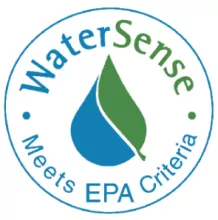
Find your utility and find out if they provide energy assessments, rebates, or free energy-saving items. It may be important to know how to contact them in case of emergencies.
Your electric and natural gas bills have several types of charges. Actual energy costs and items on bills can be different depending on your utility, but here are the basics:
The energy charge on your bill is the cost of the electricity or gas you used.
It is billed by kilowatt-hour (kWh) for electricity and therms for natural gas.
Your utility reads your meter to determine the amount of electricity or natural gas used.
Kilowatts (kW) are a rate of energy use; kilowatt-hours (kWh) are a quantity of energy used.
For example, a microwave might use electricity at a rate of 1 kW. If the microwave is used for 2 hours, it will use 2 kWh of electricity.
Therms are a unit of heat.
One therm is equal to approximately 29 kWh and can be provided by about 97 cubic feet of natural gas.
The service charge is a flat monthly fee that you pay every month to have access to energy.
Even if you do not use any energy in a given month, you will still be charged for access under the service charge.
Many utilities also include “riders” on your bill. Riders are charges for specific aspects of your utility service, such as the cost of fuel.
Riders may be based on how much energy you use or they may be a flat monthly fee.
Taxes on your bill vary based on where you live.
Taxes may be flat fees or variable.
Minnesota’s Cold Weather Rule (CWR) is a state law that protects you from having your electric or natural gas service shut off between October 1 and April 30. If you are behind on your bill payments, contact your utility company to find out if you qualify for CWR protection, and sign up. You must set up a payment plan and keep it or you may be disconnected.
All natural gas and electric utilities must offer CWR protection to residential customers. You can set up a CWR payment plan any time during the CWR season. The utility must set up a payment plan that is reasonable for your household circumstances. If you and your utility can’t agree on a payment plan, contact the Minnesota Public Utilities Commission at 800-657-3782, or email consumer.puc@state.mn.us and they can help you work with your utility.
Find out if you qualify for the Low Income Home Energy Assistance Program. If your income is too high to qualify, you should still work with your utility to establish a payment plan.
Your utility may provide home energy audits, free energy-saving items, or rebates for appliance upgrades.
If eligible for these programs you can get help with your energy expenses and may receive free home energy upgrades.
Explore different incentives available to help you pay for energy efficiency and clean energy upgrades. From new appliances to weatherization measures, there are tax credits and rebates for you to consider.
The Home Energy Guide from the Minnesota Department of Commerce provides steps to achieve energy efficiency and shows how reducing energy use will lower your energy bills, make your homes safer and healthier, and contribute positively to the environment.

Read about energy efficiency projects and ideas for residents across Minnesota